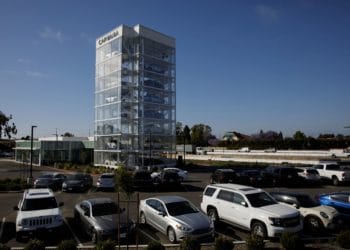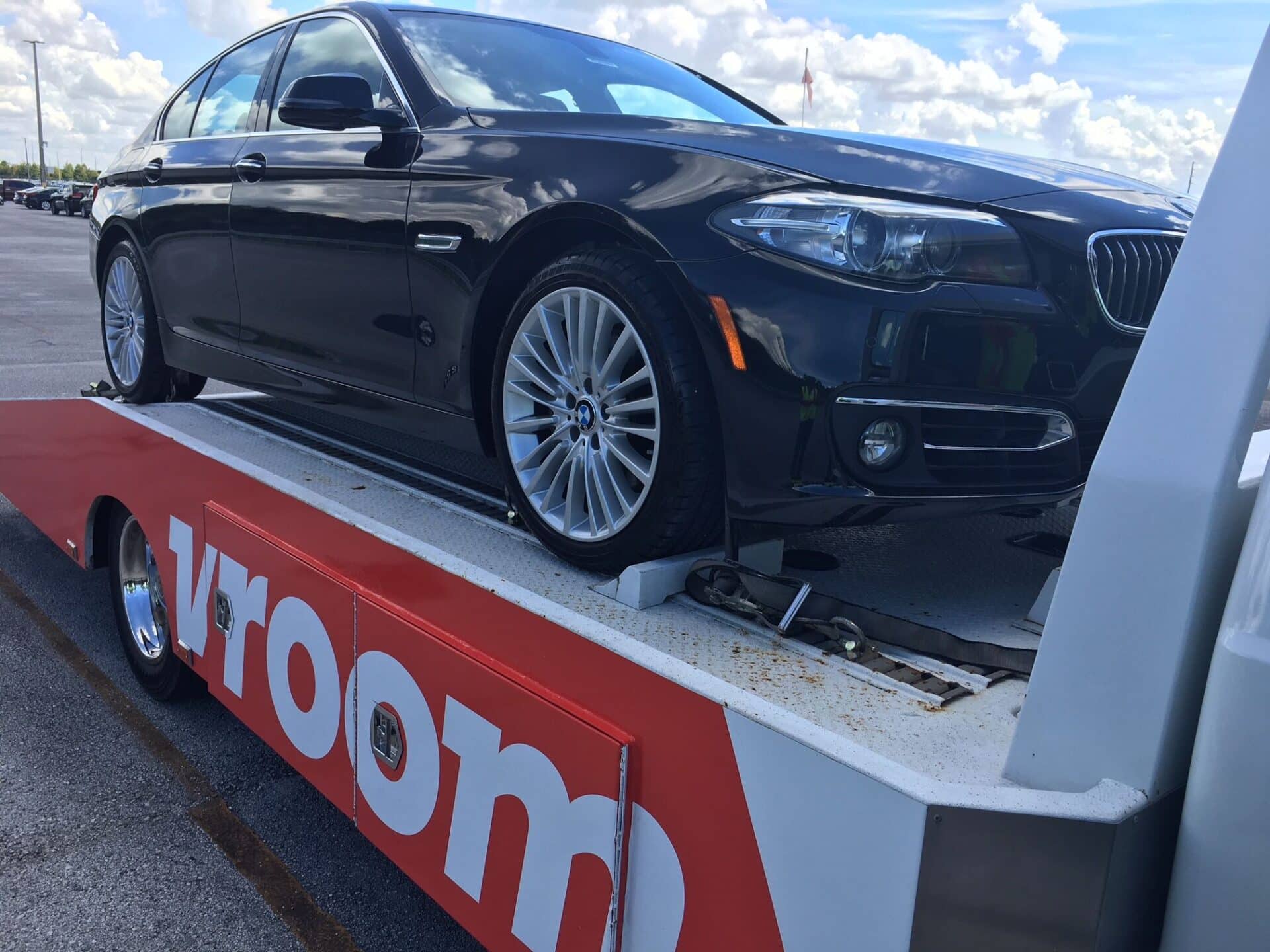Auto ABS: A look at the industry’s golden goose [Feature]
The auto asset-backed securities market has long been known for its resiliency. During the credit crisis, securitized pools of auto loans posted a strong performance, largely because consumers need vehicles to commute to work. From 2006 to 2011, S&P Global Ratings upgraded 531 tranches in auto securitizations, 16 were downgraded and only two defaulted. As William Strauss, former senior economist at the Federal Reserve Bank of Chicago once said, “You can live in your car, but you can’t drive your house.”
Yet, the coronavirus pandemic has unfolded into an unprecedented economic landscape rocking every facet of the auto finance industry starting in March.
The auto ABS market was not insulated from the pandemic fallout. In early March, auto ABS volume was outpacing last year’s numbers by 11.1% at $26.1 billion, according to JP Morgan Securities. Spreads for top tranches in prime transactions were 13 basis points (bps) below swaps, tighter than they’d been since 2015, according to an Auto Finance News analysis. By all accounts, the market was healthy.
But by the end of March, when the pandemic first spurred business closures and widespread shelter-in-place orders, the $111 billion auto securitization market had ground to a halt. In fact, there were no new issuances for nearly five weeks. Fitch Ratings revised its asset performance outlook for both auto lease and auto loan ABS to negative from stable, spreads blew out, and the Federal Reserve announced the revival of its $100 billion term-asset backed securities loan facility (TALF). The program that provides low interest loans on AAA-rated bonds to investors was first introduced in March 2009 during the credit crisis, “to improve market conditions for ABS more generally,” according to a Fed statement.
The halt in capital markets issuances brought a slew of concerns to the industry. More than a dozen prime and subprime lenders frequently rely on the ABS market to secure funding for their operations, giving rise to liquidity concerns similar to what global markets experienced during the Great Recession.
Soon, though, issuers slowly started finalizing deals. By the end of April, six auto lenders, including CarMax Auto Finance, GM Financial, Hyundai Capital America, Nissan Motor Acceptance Corp., Santander Consumer USA and Toyota Financial Services funneled a combined $6.1 billion in issuances to market, alleviating fears — at least temporarily — that the auto ABS market was no longer the golden goose it once was.
Looking inward
When issuers returned to market, however, the deals’ structures looked a little different from previous transactions. Total jobless claims, an external metric largely correlated with auto ABS performance, topped 30 million by April 30, according to the U.S. Labor Department, spurring issuers to increase credit enhancement to account for a projected increase in losses while still achieving favorable ratings on their tranches.
Some issuers scaled back their securitization volume. GM Financial, for example, cut the volume in its April deal by 36% to $790.3 million compared with its January transaction. TFS also cut its volume during the same month 31% to $1.1 billion compared with its February securitization.
Many saw increases in reserve account balances, as well. The reserve account acts as a safety net in case any of the loans collateralized in the securitization pool stop performing. HCA, for example, in its $1.1 billion transaction increased its reserve account 75 bps to 1% of the outstanding pool balance, costing the lender $11 million. By comparison, its reserve account amounted to $3.9 million in the captive’s Oct. 2019 deal.
Santander Consumer USA, the most active issuer in auto finance by volume, had its reserve account double to 2% of the $1 billion transaction, and the overcollateralization also doubled to 26.15% compared with its August 2019 deal.
Excess spreads, another form of credit enhancement, increased 15 bps in Ford Credit’s $1.4 billion prime deal, according to S&P Global. Even luxury carmaker Mercedes-Benz increased its excess spread and reserve account by 58 bps and 75 bps, respectively, in its first transaction of the year. World Omni Financial, too, in its $847.7 million securitization, increased its reserve account to 1% of the initial pool balance, up from 0.25% in its first 2020 issuance.
The list goes on. Westlake Financial Services also saw increases in both reserve accounts and overcollateralization amounts. Westlake’s $800 million deal had an initial overcollateralization of 8%, an increase from 0.6% in its earlier transaction this year, and its reserve account increased 50 bps to 1.5% of the initial pool balance.
Yet, despite what appears to be a rising cost of funds secured through capital markets, many issuers such as Consumer Portfolio Services, Westlake Financial, and World Omni plan to continue their normal cadence through the rest of the year, AFN has learned.
CPS, which made it to market in January for its first deal of the year ahead of its usual March issuance, has an eye on its peers, Chief Financial Officer Jeff Fritz told AFN. “We’re watching to see if the usual issuers are going out with their deals and then monitoring the spreads and pricing on those transactions,” he said. “When we’re not in the market, we’re in contact with our bankers and other partners who are in the markets all the time.”
“Even without a global pandemic, we’ve seen fluctuations in spreads and structures in the past, so we’ve always been subject to those changes,” Fritz explained. “We try to focus on executing our business plan and not worry too much about things we can’t control. Even with fluctuations in the deal structure and leverage, the ABS market is still a good strategy for financing our business. If the deals require more capital going forward, we’ll incorporate that into our pricing and capital planning.”
Westlake also plans on moving forward with its prior-year strategy of three securitizations, a company spokesperson confirmed with AFN. “Despite more conservative structures, ABS market is still very attractive. [In early July], the consumer ABS market had 13 trades printing around $10 billion, marking the second most active week by dollar volume in 2020 for the sector.”
Further, the Fed’s low benchmark interest rate, which currently sits at a target range of 0% to 0.25%, has offset wider spreads, the Westlake spokesperson said. “From an overall coupon perspective, the economics for an ABS are still very attractive. As an example, our all-in yields fell approximately 45 bps between WLAKE 2020-1 and WLAKE 2020-2 transaction.”
World Omni has primarily been watching credit spreads, Eric Gebhard, treasurer at JM Family, World Omni’s parent company, told AFN. “Prime auto AAA spreads blew out north of 100 bps in April and early May but have since recovered to the low to mid-20s. While this is wider than spreads before COVID-19, they are a welcomed relief from the market stresses seen in the March-to-May period.” As such, World Omni also does not plan to change its issuance pattern because the securitization market continues to provide attractive financing for its business, he said.
To date, credit performance on auto ABS bonds has continued to be surprisingly resilient, Brian Ford, senior director of structured finance research at Kroll Bond Rating Agency, told AFN, largely due to robust payment deferral plans and federal and state stimulus packages. In fact, Moody’s Investors Services has only taken rating actions against 19 of its 253 total rated tranches in auto loan and lease ABS as of July 7, according to a report from the rating agency.
CPS’ Fritz sees similar trends. “We’ve been pleasantly surprised with the resiliency of the ABS market. It was hard to guess when the market would come back, but since then we’ve seen many of the regular issuers execute deals, with spreads tightening along the way,” he said.
Everything is connected
One of the characteristics that makes the auto ABS market attractive for both lenders and investors is its inherent structure. ABS deals are “bankruptcy remote,” meaning the securitized bonds are independent from the issuing lender, protecting them against any liquidity concerns the issuer might face during an economic recession.
However, the coronavirus-induced recessionary economy has squeezed other aspects of the auto market, spurring rating agencies such as S&P, Moody’s, KRBA and DBRS Morningstar to keep a watchful eye on external factors that directly influence auto ABS performance, including unemployment rates, lender deferral programs, government stimulus programs and used-vehicle values, all of which create large question marks in the industry’s forecast.
Deferrals on securitized assets have been spurred by unemployment rates north of 11%, peaking in April. Since then, they’ve remained at historic levels and are top of mind at S&P Global, according to Amy Martin, a senior director in the rating agency’s structured finance group. Many of these extensions are multi-month so, as a result, the level of loans currently on extension status is high for many auto ABS pools, she said.
“We found that Reg AB II subprime shelves had an average of approximately 23% of loans in extension status at the end of May. Certain prime securitization shelves had more than 10% of loans in deferral status at the end of May,” Martin said, noting that S&P is tracking extensions because it is keeping the delinquency, repossession and charge-off rates lower than they would be otherwise.
“With high levels of unemployment, delinquencies should be trending higher, but extensions are keeping them down,” Martin said.
There is, however, a light at the end of the tunnel. S&P is noticing that the length of extensions being granted is shortening, Martin explained. “Back in March, only three Reg AB II issuers were using one month extensions as their primary type of relief. That increased to eight issuers in May.”
Further, issuers using one-month extensions — such as Capital One, CarMax and NMAC — have the highest payment resumption rates when obligors come out of extension, clocking in at 45% to 50%, Martin said. Conversely, issuers relying on multi-month extensions have fewer consumers making payments when they come out of extension. Of the prime loans extended from March to May, 63.5% were still in extension status as of end of May, according to a July 16 report issued by S&P. For subprime loans, that figure jumps to 81.5%.
DBRS has also seen loan loss levels come in lower that its initial April forecast, according to Ines Beato, senior vice president of U.S. ABS. “A lot of our concerns haven’t come to fruition yet, but there’s still a lot of unknowns as to what will happen in the second half of the year,” she said.
Positive consumer payment performance on the auto ABS notes is largely the product of deferral programs, along with the robust state and federal stimulus plans enacted to combat skyrocketed unemployment rates, KRBA’s Ford said. “It’ll be interesting to see over the coming months [how the loans perform] if there isn’t another round of stimulus forthcoming or if services are unable or unwilling to provided continued extensions and modifications to loans.”
“From an industry perspective, we’ve never seen this level of loan modifications,” Ford said. “The closest thing to this is hurricane Harvey and Irma back in 2017, where a large percentage of borrowers in places like Texas and Florida were provided shortterm payment relief.” Coincidentally, Texas and Florida, along with California, are the top three states with the largest concentration of securitized assets in the auto ABS market, according to multiple reports. These states have also been recently plagued by a surge in new COVID cases, forcing many to slow their reopening plans.
But with many blanket deferral programs ending and lenders pivoting to case-by-case deferrals that may place the burden of proof on borrowers to show the economic hardship COVID-19 has wrought, true levels of credit losses still remain to be seen, said Nicky Dang, associate managing director of ABS at Moody’s, noting that lenders are going to be more selective in how they issue deferrals.
And while the one-time payment of $1,200 to consumers and weekly stimulus of $600 helped prop up credit performance for lenders like CPS, Fritz noted in the subprime lenders’ second-quarter earnings call, those weekly payments have since expired, and the government has yet to pass another stimulus bill. Democrats in the U.S. House of Representatives proposed an additional stimulus bill back in May, but the Republican-controlled Senate has not yet addressed it.
In fact, Senate Majority Leader Mitch McConnell (R-KY) has indicated that a new stimulus should come “in the next few weeks,” and there are rumblings that the weekly stimulus for consumers will be reduced to $200 a week from $600, according to published reports, further adding to the uncertainty surrounding ABS performance moving forward.
Used-vehicle values are also top of mind for many rating agencies, as they directly affect lease securitizations and potential recovery rates for auto ABS issuances. In March, the Manheim used-vehicle value index plummeted to a three-year low, only to surge to record highs in June, a positive for the market, Moody’s Dang said.
In a lease securitization, the vehicles’ residual value often represent roughly 70% of the total assets collateralized, said Margaret Rowe, senior director at Fitch Ratings. If vehicle values go down, the overall securities’ performance is directly affected. Similarly, in a securitization backed by auto loan receivables, issuers rely on the used-vehicle market for recoveries on defaulted loans, the proceeds of which are owed back to trust. Since the pandemic first hit, GM Financial and Ford Credit have successfully come to market with lease transactions, a good sign for issuers like World Omni, which also has a presence in the segment and has been watching closely, Gerbhard said.
In a hypothetical scenario, depressed used-vehicle values coupled with increasing default rates could be a recipe for disaster in auto ABS performance for all segments.
The sentiment survives
Yet, despite the uncertainty surrounding the market, investor sentiment remains high, according to Patrick Tadie, senior vice president of capital markets structured finance at Wilmington Trust.
Westlake, for one, experienced broad-based investor demand that facilitated significant pricing moves and upsizing — a positive indicator, according to the company. The full-spectrum lender also added seven new investors to its platform in the last deal.
Perhaps the biggest indicator of the sentiment surrounding the market’s current strength, though, lies in the absence of investor interest in the Fed’s TALF program. As of July 21, requests amounted to $983 million, mostly in commercial mortgage-backed securities, small business loans and student loans, and none for auto ABS, according to a research note from Bank of America Securities.
“We’re finding that AAA classes are pricing well inside what they would cost under TALF,” DRBS’ Beato said. “So, I think the market is healthy from a AAA perspective that it doesn’t make sense for investors to take advantage of the program at this time.”
Still, it is difficult to forecast what the year still holds for the auto ABS market due to the ever-changing landscape of the COVID economy, experts agree. “I think it’s really going to be a function of the labor market,” KBRA’s Ford said. “If unemployment stays high, I think performance will start to be affected in the later parts of the year and into 2021.”
Editor’s note: This article first appeared in the August issue of Auto Finance News, available now.
Auto Finance Summit, the premier industry event, returns October 20-22, 2020, as a virtual experience. The virtual experience will offer the same quality networking and education as past events, all through an online platform. To learn more about the 2020 event and register, visit www.AutoFinanceSummit.com.















